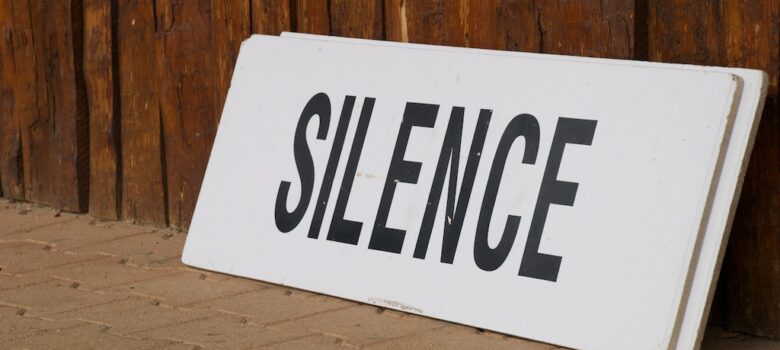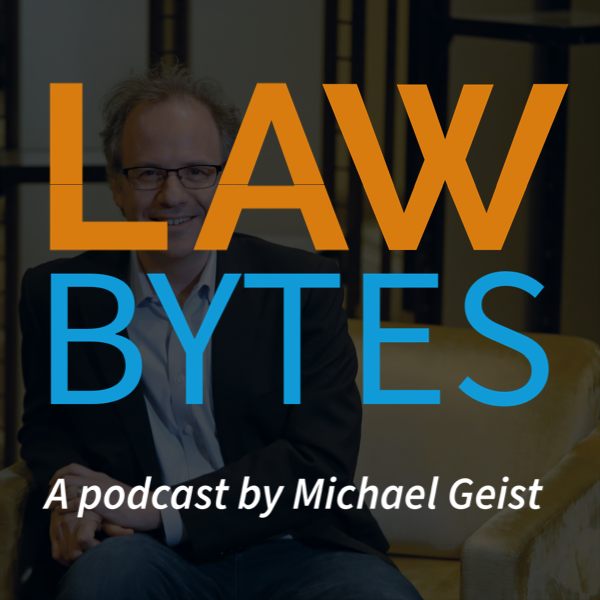Deborah Lyons, Canada’s recently retired envoy for combatting antisemitism, this week lamented that the effort to shine a light on increasing antisemitism in Canada had left her “despondent and despairing about the fact that it was hard to get people to speak up, to speak with clarity, to speak with conviction about what we were seeing happening here on Canadian soil.”
Jewish communities have long known silence. My The Hub opinion piece notes that at its worst, it has manifested in some communities as synagogue floors covered in sand to mask the sound of feet shuffling during silent prayers or by those hidden during the Holocaust to escape capture by the Nazis. In today’s Canada, silence comes in different ways. Some Jews quietly conceal their identity by refraining from displaying a Star of David or kippah, families remove mezzuzahs from their front doors to avoid telegraphing that it is a Jewish home, and the community avoids widespread promotion of events hosted in community centres due to security concerns.
The silencing of the Jewish community is particularly notable within the education system. That is the inescapable takeaway from a newly released survey on antisemitism in Ontario schools, which shockingly identified hundreds of antisemitic incidents targeting children as young as six years old. Being called “half-human” or swarmed by fellow students with Nazi salutes would leave few children unscathed. But the effects of antisemitism in schools lead to more than just fear and alienation. Like many victims of harassment, bullying or criminal activity, it leads to silence.
And the issue is not limited to students in elementary and high schools. On university campuses, shying away from publicly expressing opinions or keeping the location of Jewish events secret has become an increasingly common practice. In recent months, some faculty have criticized officials seeking to protect Jewish students and dismissed broadly recognized Jewish organizations who express safety fears by suggesting they are not representative of the community.
In the months after the October 7th attacks, the steady rise of antisemitism primarily sparked disbelief: the disbelief among far too many in Canada that rising antisemitism was real alongside the disbelief by many within the Jewish community that antisemitism had returned in a manner unseen since the Holocaust. As evidence has mounted – multiple murders in the United States, vandalism at Canada’s national holocaust memorial, and shootings at Jewish schools and community centres around the world – disbelief today is far harder to maintain.
In response, there have been some notable efforts to address the antisemitism scourge. Both the federal government and some local municipalities have enacted or proposed bubble zone legislation designed to create a safe perimeter around places of worship, schools, hospitals, and other vulnerable institutions. Some universities and governments have adopted much-needed antisemitism guidelines and promised to enforce them more aggressively.
More is required, but those responses appear to have shifted the discourse from disbelief to efforts to silence and thwart initiatives to protect the community. It often starts by insisting that the Jewish community is not only unable to judge what constitutes antisemitism, but that it actively engages in its weaponization. It is hard to think of any other group that is not only denied its own ability to identify harms but is painted as acting nefariously when it does so.
When the issue does break through, the efforts to protect the Jewish community are then silenced by framing them as undermining the rights of others. For example, bubble zone initiatives are frequently characterized by critics as an affront to freedom of expression, despite being carefully drafted and modelled on similar laws that have been upheld by Canadian courts as constitutional.
Similarly, antisemitism guidelines on campus have been derided as chilling freedom of expression. These institutions have long histories of adopting extensive regulations to protect women, visible minorities and Indigenous groups, even going so far as to identify and guard against micro-aggressions. But the same approach seemingly does not apply to the Jewish community, who instead face charges that protecting their rights would come at the expense of the rights of others.
In fact, even political views on the founding of the State of Israel or expressions of support for Zionism, which as former prime minister Justin Trudeau noted “is the belief, at its simplest, that Jewish people, like all peoples, have the right to determine their own future” runs the risk of being labelled as “racist” in today’s educational environment, thereby silencing the perspectives.
As the rise in antisemitism has become too pronounced to ignore, there have been some important efforts to chronicle it and call for action. But what has been missing is an examination of its day-to-day effects, which has placed the safety and well-being of an entire community from grade school to seniors’ homes at risk. Those effects will become less visible if all that is left is the sound of silence.








I wonder what our leaders would do if Jew was substituted for women and anti semitism was changed to sexually harassed?
Gaza Genocide asshole
Your comment is emblematic of the problem: Jews in Canada have no connection to the war in Gaza, just as Muslims and Arabs in Canada should not be attacked for crimes committed by Muslims on October 7th, and around the world for decades.
You seem to see things in one dimension, not interacting with what was written.
So most Canadian Jews are not standing with Israel during this genocide?
And many Moslem Canadians aren’t standing behind Hamas terrorists? You only read this piece do you could show your negativity against Jews and Israel. And the genocide you imagine is taking place in Gaza.
You poor ignorant delusional racist nitwit.
You are as repulsive as the genocide Israel is carrying out in Gaza.
I reply to this nonsense to expose the real problem in Canada; dipshit ignorant racists like you and Michael Geist.
I have a lot of time for your opinion on IP issues but the continued hyperfixation on this, and the complete inability to understand that opposition to the literal murder of thousands of infants in Gaza is NOT antisemitism — Oct 7 broke your brain, my guy, like 9/11 broke the brains of many Americans. If you can’t see that these little screeds are putting you on the wrong side of history as supporting a global atrocity — I don’t know, man. Get therapy.
100%
Let’s use your level of logic – Wipe out Gaza, problem solved.
Isn’t that what Hitler said about the Jews?
Yeah, one cannot even be surprised by Zionists unironically posting that the final solution is to “wipe out Gaza”. They are so disconnected from how completely deranged they look to most of the world and think having names like ‘SickofAntisemitism’ somehow is a hall pass for them promoting genocide.
Your comment is emblematic of the problem: Jews in Canada have no connection to the war in Gaza, just as Muslims and Arabs in Canada should not be attacked for crimes committed by Muslims on October 7th, and around the world for decades.
You seem to see things in one dimension, not interacting with what was written. You should also check your facts, even if inconvenient.
Muslims committed crimes on Oct7? Not Palestinians? Muslims have been committing crimes around the world for decades?
I think you have exposed the hater here. Please stop hating.
I just don’t see it.
Through you article you speak openly and without any fear whatsoever of repercussions. And rightly so, that’s what free speech is about.
Are there incidents of Jewish children being victims of hate speech? Yes. More so than any other demographic? I don’t think so. And are the incidents ignored? Very much no. When these incidents are observed, they are condemned swiftly. And more to the point, are these incidents a result of institutionalized antisemitism? Absolutely not. A child doesn’t know enough to truly hate. That behaviour is taught. Children inherit it from their parents.
A common complaint of the archetypal Islamophobe is that the Muslims not directly involved in hostilities don’t loudly condemn Hamas. As if anyone’s even listening to them. And because they haven’t registered their dissatisfaction, that makes them unworthy of continuing to draw breath. Standard dehumanizing tactics.
Along the same line of reasoning, I haven’t heard a lot of Israelis complaining that Likud is a psychotic, genocidal association of rich and powerful men. But you know what? I don’t need to hear it. I know most people don’t support this. Just like most people don’t support the race-based roundups going on south of the border.
I expect Jewish communities will be on their toes in the next few weeks, while the Likud aggressors press their genocidal war and the ordinary people of the world rightly react in disgust. A Jewish resident of Canada is no more responsible for the war crimes of Likud than I am responsible for the actions of the IRA during “the troubles”. But tempers will flare and a few remarks will be thrown at people who don’t deserve it and can’t change anything. Just as happened to innocent Canadian Muslims in the wake of October 7th.
It wouldn’t hurt, Professor Geist, to acknowledge the genocide, and to condemn it. Which I’m sure as a good and decent man you already do in your heart. Hamas, MAGA, Likud. It’s all the same, isn’t it?
Well Hamas is a resistance movement while Likud was an ethnic cleansing land stealing movement. One is a little more repulsive.
I think this is a much more nuanced portrayal of the situation and is worth a read: https://jewishcurrents.org/a-canadian-antisemitism-statistic-went-viral-but-it-has-no-source
As a Canadian, I’m appalled with the disgusting and genocidal values that so many Canadian jews and zionists hold openly.
The massacres we see daily in Gaza have made me re-examine my business dealings with any Canadian who supports Israel or their genocide.
The most stunning part is watching Canadian jews run around pretending like they are victims (like you with this blog post). Do you have no shame?!
All past, present, and future IDF who have ever participated in the genocide will be forever hunted.
Any Canadian who has ever supported genocide will also be prosecuted.
If you can’t see that these little screeds are placing you on the wrong side of history as supporting a global atrocity, then I don’t know, man. I have plenty of time for your thoughts on IP issues, but your constant obsession with this and your total incapacity to comprehend that opposing the actual murder of thousands of infants in Gaza is not antisemitism—October 7 broke your brain, my friend, just as 9/11 broke the brains of many Americans.
Being Jewish in Canada in 2025 is a rich, meaningful experience that offers opportunities to find identity and connect with a diverse community.
A sobering reflection. Hopefully, speaking with clarity will become easier in Canada.